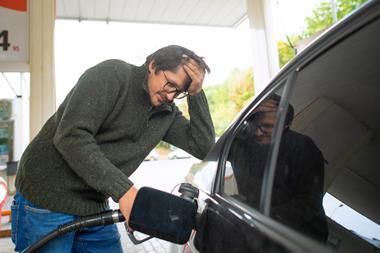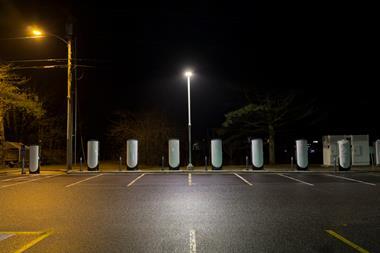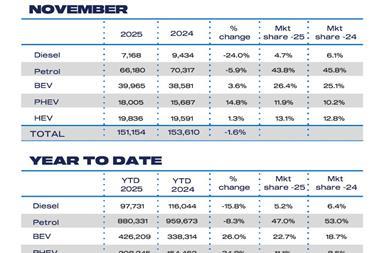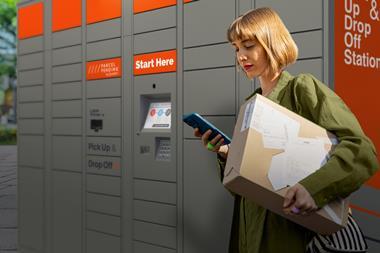With some forecourt retailers uncertain about the benefits of electric vehicle (EV) charging on their sites, Mer’s senior business development manager, Zuber Patel, explains how it can help them drive future business success.
EV charge points will start appearing on traditional fossil fuel forecourts as more and more drivers switch to EV.
As they begin to consider this new stage in developing their business model and creating an EV forecourt, owners may have questions about installing EV charging on their site, says Zuber Patel, senior business development manager at Mer.
While driving an EV might not be the norm right now, petrol and diesel vehicles will begin to see a phase-out in the coming years. In light of this, EV chargers can only be viewed as an asset, adding more value to a forecourt, he notes.
According to recent Society of Motor Manufacturers and Traders (SMMT) figures, total electrified vehicles now account for over a third of the new car market. It is expected that one new battery electric vehicle (BEV) will be registered every 50 seconds by the end of 2023, and this is anticipated to improve to one every 40 seconds next year.
“The electric era opens a whole new market for forecourt owners to capitalise on. To not install EV chargers on your forecourt is to alienate a growing percentage of drivers and will eventually see your customer base decrease in the long term,” says Patel.
“The subsequent benefits should make becoming an EV charging provider attractive, and this is not only because of the fact there will be more drivers visiting the forecourt to charge. Because charging an EV typically takes longer than refuelling a traditional internal combustion engine (ICE) vehicle, forecourt owners can expect increased footfall into on-site amenities, and therefore increased spending in the amenities.”
Installing EV charging on-site
So what are the primary concerns forecourt retailers face when it comes to installing EV charging on-site, and how can these be resolved?
Space and development are key pinch points that forecourt retailers face and it is important to remain flexible and creative when designing and planning the infrastructure on a forecourt, says Patel. “While EV charging is a new asset to a forecourt, there is no expectation that a forecourt owner removes ICE refuel pumps immediately. EV chargers are an addition to a site, and can sit alongside the refuel pumps,” he explains
“If there is a definitive restriction for a hub of charge points, the number of bays in the initial install can be reduced and utilisation assessed subsequently once they are in the ground. This will hopefully increase the customer’s confidence in the infrastructure and could influence future decisions around creating space for additional charge points by removing fuel pumps.”
Owners are also often concerned about the need to upgrade the power supply on a forecourt to cope with the new EV chargers, but Patel says that Mer can resolve this under a full turnkey solution, liaising with the networks and distribution network operators (DNOs) to investigate grid connections and understand power availability. “If there is limited grid availability, we will work to find a solution so that a forecourt retailer can realise their EV charging goals,” he says.
How to fund an EV charging solution
Perhaps of primary concern is the capital needed for a forecourt retailer to fund an EV charging solution. However, Patel says flexibility and a tailored approach is the way forward.
“While forecourt owners can take a self-funded approach, which will see them fund the supply, installation and maintenance of the infrastructure and receive all the revenue, this is not the only option for their EV forecourt,” says Zuber.
In fact, Mer offers a variety of financial models for its EV charging projects.
- ‘Charging as a service’
Forecourt owners are not responsible for any upfront capital costs, and instead pay off the asset through a monthly repayment plan while also receiving an income from the infrastructure. Once the costs have been repaid, they can either continue to work with Mer or choose to operate the infrastructure independently. - Fully funded
Mer funds a turnkey solution, which includes the consultation, design, installation, warranty and maintenance. - Hybrid
The forecourt owner co-funds the supply, installation, maintenance, operation and management of the charge points with Mer.
While some forecourt owners may also have concerns about commitment to an agreement over a lengthy period of time, Patel notes that the company offers a charger refresh during the term, which limits the possibility of having obsolete infrastructure on a site. “If the market moves during an agreement term, there may be a possibility to upgrade and update the hardware in line with driver demand if the right grid enforcements are in place,” he says.
“Following the end of a contract term with Mer, the forecourt retailer will have an existing contract for the power connection and the choice to adopt or terminate this connection, irrespective of what happens with the EV chargers. The owner is free to decide what they wish to do with the power connection after the end of the contract, without having to pay an additional cost to obtain the connection.”
Looking to develop an EV forecourt?
Mer is looking to develop partnerships and work with forecourt owners on an ongoing, long-term basis. As such, the company tailors its solutions to the individual site, using data from the chargers to advance the development over an extended period.
Find out more about how EV charging can bring an additional revenue stream to your forecourt by downloading Mer’s bespoke eguide for the forecourt sector

































